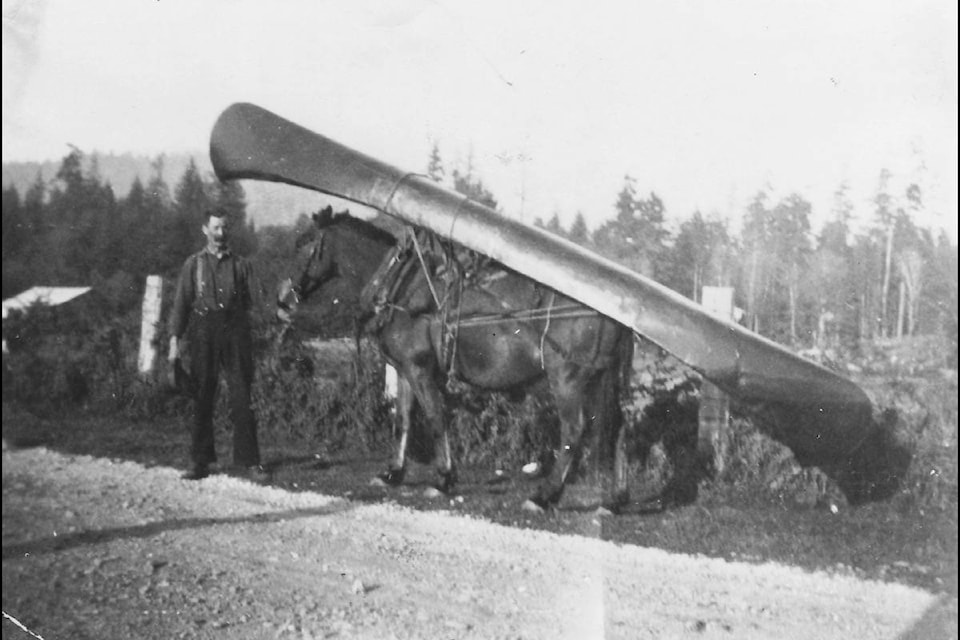Elida Peers
Contributed
When I was a child I heard about the iron canoe that was located at Sheilds Lake during the 1930s and 1940s.
Today, when I notice along the Charters River hikers heading up into the Sooke Hills, on their way to Sheilds and Grassy lakes, I doubt they know that the canoe pictured here in 1925 was once part of lake country lore.
Horseback riding and hiking up to the lakes was popular in the earlier era, and the canoe was part of the holdings of the Alpine Club of Canada, who a few years later constructed a fine two-storey lodge at Sheilds Lake. Intriguing names also given to that lake were “Lake of the Seven Hills” and “Smokehouse Lake”.
When the Alpine Club of Canada constructed their lodge, which it called a section hut, in 1929, the land was owned by Claude L. Harrison. Harrison had his own claim to fame; he was a well-known solicitor, employed many years as prosecutor for the City of Victoria, and in 1952, elected Victoria’s mayor.
This photo came to us from Helen Sheilds Michelsen Gibson, eldest daughter of Sooke’s much-loved blacksmith Lyall Sheilds. The Sheilds blacksmith shop was located at the dip of Belvista (at the time, this was Sooke Road) and it was there that Lyall Sheilds fabricated the beautiful canoe that we see being transported by the swashbuckling Harry Vogel up to the lake country.
The horses used for trail riding by the Alpine Club were housed in the stables by the Sooke River, the same building that now houses a beer and wine store. It was a short trot from the stable to the blacksmith shop to load the canoe onto the horse, secured by a harness contraption that could support the weight without taking the hide off the horse. While none of the museum’s helpful consulting fellows saw this particular canoe, they estimate it to be about 7.5 metres in length.
In those days it was typical for supplies to be left at lake sites to be shared by others, and trying out this canoe in our sub-alpine lakes became a tradition. If anyone knows what happened to this canoe, we would be glad to learn of it. There was a smaller iron canoe as well, which when last seen by local hiker Doug MacFarlane, submerged in Grassy Lake.
While these fascinating canoes are but a memory, we still have the tranquil beauty of our uplands lakes, and the haunting call of the whiskey-jacks.
•••
Elida Peers is the historian of Sooke Region Museum.
